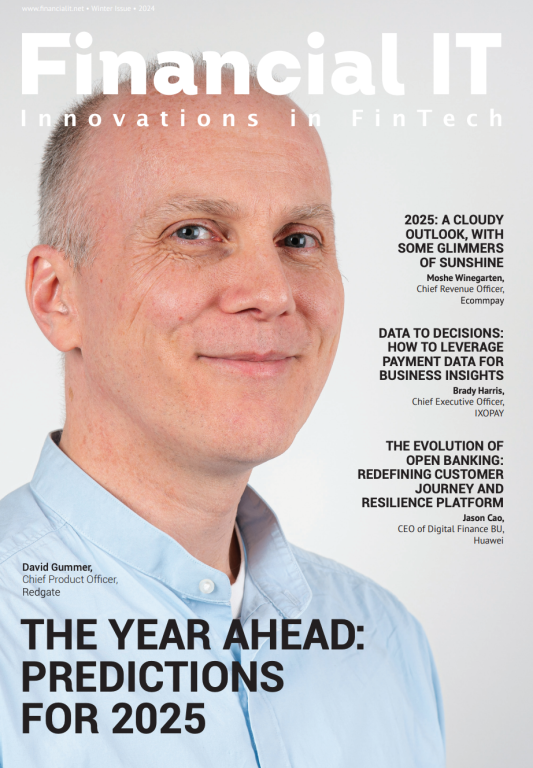The Role of Data Quality in Enhancing the Customer Experience in 2024

- Barley Laing, the UK Managing Director at Melissa
- 26.02.2024 11:45 am #data #idverification #banking
With a growing number of fintechs competing with legacy banks, it is becoming much more difficult for financial institutions to stand out in a crowded, increasingly online marketplace.
It is why having a point of differentiation, via the delivery of a positive customer experience, is the way forward. Particularly as customer acquisition necessitates more investment than retention, with it costing on average five times more to source a new customer than to keep an existing one.
Such an investment in the customer experience will help to drive loyalty and long-term revenue.
The role of clean data
One of the most valuable assets financial institutions have is customer data. By maintaining and using it correctly it’s possible to reduce customer churn and drive revenue.
This is because clean and updated data can be analysed to gain valuable customer insight that can be used to deliver personalised communications, which can help to up and cross-sell products and services, and aid new product development.
Data decay is an ongoing issue
A big issue for those in financial services is that data decays on average at two percent a month and roughly 25 percent a year, as people move home, divorce, or pass away. This has a huge impact on the customer databases of financial institutions, which is why it’s vital to have data cleaning processes in place at the onboarding stage, along with tools to clean held data in batches. The good news is such an approach usually involves simple and cost-effective changes to the data quality regime.
Source an address lookup / autocomplete service
To obtain accurate contact data at the customer onboarding stage use an address lookup or autocomplete service. It provides accurate address data in real-time by providing a properly formatted, correct address when the user starts to input theirs. At the same time the number of keystrokes required is cut by up to 81 percent when entering an address. This speeds up the onboarding process, making it much more likely that the user will complete an application or purchase.
Accessing such a service is important with 20 percent of addresses entered online containing errors; these include spelling mistakes, wrong house numbers, and incorrect postcodes, mostly due to errors when typing contact information.
The good news is that the first point of contact verification can be extended to email, phone, and name, so this valuable contact data can also be verified in real-time.
Deduplicate data
Duplicate data is a common and significant issue, with the average database containing 8-10 percent duplicate records. It occurs for several reasons, for example when two departments merge their data and errors in contact data collection take place at different touchpoints. It adds cost in terms of time and money, particularly with printed communications and online outreach campaigns, and it can negatively impact on the sender’s reputation.
The solution is to use an advanced fuzzy matching tool to merge and purge the most challenging records to create a ‘single user record’ and source an optimum single customer view (SCV), with the insight used to improve communications. Also, organising contact data in this way will increase efficiency and reduce costs, because multiple communication efforts will not be made to the same person. Finally, with a unified record established for each customer the potential for fraud is lessened.
Data cleaning
Data suppression, or cleaning, using the appropriate technology that reveals people who have moved or are no longer at the address on file is a vital part of the data cleansing process, and therefore in supporting efforts with improving the customer experience. Along with removing incorrect addresses, these services can include deceased flagging to prevent the distribution of mail and other communications to those who have passed away, which can cause distress to their friends and relatives. By utilising suppression strategies organisations can save money, protect their reputations, avoid fraud, and improve their targeting efforts.
Use a data-cleaning platform
Evolving technology, such as artificial intelligence (AI), means it’s never been easier or more cost-effective to deliver data quality in real time to support the delivery of a better customer experience and wider business efficiencies. One that stands out is a scalable data cleaning software-as-a-service (SaaS) platform that doesn’t require coding, integration, or training. Such technology can cleanse and correct names, addresses, email addresses, and telephone numbers worldwide. Also, records are matched, ensuring no duplication, and data profiling is provided to help identify issues for further action. A single, intuitive interface offers the opportunity for data standardisation, validation, and enrichment, ensuring high-quality contact information across multiple databases. It can deliver this withheld data in batch and as new data is being gathered. Also, such a platform can be deployed as a cloud-based API or on-premise.
Identity verification
As part of adhering to know-your-customer (KYC) and anti-money laundering (AML) regulations at the customer onboarding stage, undertaking ID verification checks in real-time using a SaaS or cloud-based API electronic ID verification (eIDV) tool, is just as important in delivering a good customer experience.
In conclusion
For those serious about improving their competitive edge and driving growth in 2024, implementing best-practice data quality procedures is a must. This approach ensures the delivery of a consistent, positive customer experience online, and builds stronger, more resilient long-term engagement and revenue.





















